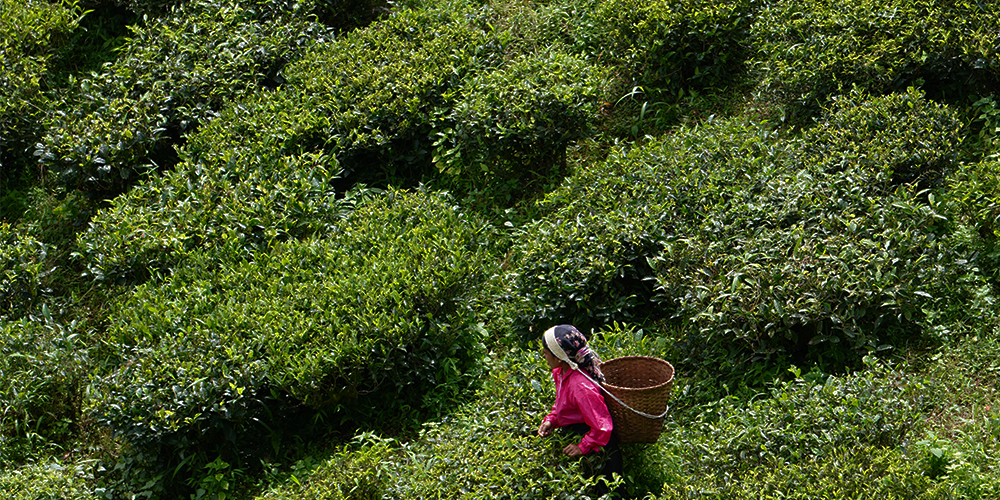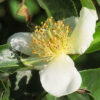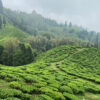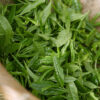Autumn Flush Darjeeling Tea, often considered the unsung hero of the Darjeeling tea world, offers a unique and delightful experience for tea enthusiasts.
While not as well-known as its spring and second flush counterparts, the autumn flush holds a distinct charm of its own.
Harvesting Season:
The Autumn Flush occurs from late October to November, as the leaves mature and undergo a transformation in flavor and aroma. This period, marked by cooler temperatures and reduced rainfall, imparts distinct characteristics to the tea.
Flavor Profile:
Autumn Flush Darjeeling teas are known for their rich, full-bodied taste. The flavor is less delicate than the first flush and less brisk than the second flush, making it ideal for those who prefer a heartier cup. Expect notes of muscatel, ripe fruit, and even a subtle spiciness, creating a well-rounded taste that lingers on the palate.
Aroma
The aroma of Autumn Flush Darjeeling tea is often described as warm and earthy. It carries hints of woodiness, dried fruits, and sometimes floral undertones, giving it a complex and inviting scent.
Appearance:
The liquor of this tea is typically darker in color, ranging from amber to deep orange, reflecting its seasonally-induced robustness.
Best Brewing Practices:
To fully appreciate the qualities of Autumn Flush Darjeeling tea, it’s recommended to brew it at a temperature of around 90°C (194°F) for 3-4 minutes. The use of fresh, pure water is essential to bring out the tea’s nuanced flavors.
Versatility:
While Autumn Flush Darjeeling teas are excellent on their own, they also pair well with a variety of foods, making them a versatile choice. They complement both sweet and savory dishes, making them suitable for any time of day.
Limited Availability:
Compared to the more prominent spring and second flush Darjeeling teas, autumn flush varieties are relatively limited in quantity. This scarcity adds to their appeal for those seeking a unique and seasonal tea experience.
In conclusion, Autumn Flush Darjeeling tea may not enjoy the same fame as its spring and second flush counterparts, but it offers a distinctive and rewarding tea-drinking experience. Its rich flavor, warm aroma, and versatility in pairing with various foods make it a hidden gem for tea connoisseurs who appreciate the subtleties of seasonal variations in Darjeeling tea. Don’t miss the opportunity to savor this delightful, earthy cup of tea during its short-lived autumn season.
While not as well-known as its spring and second flush counterparts, the autumn flush holds a distinct charm of its own.
Harvesting Season:
The Autumn Flush occurs from late October to November, as the leaves mature and undergo a transformation in flavor and aroma. This period, marked by cooler temperatures and reduced rainfall, imparts distinct characteristics to the tea.
Flavor Profile:
Autumn Flush Darjeeling teas are known for their rich, full-bodied taste. The flavor is less delicate than the first flush and less brisk than the second flush, making it ideal for those who prefer a heartier cup. Expect notes of muscatel, ripe fruit, and even a subtle spiciness, creating a well-rounded taste that lingers on the palate.
Aroma
The aroma of Autumn Flush Darjeeling tea is often described as warm and earthy. It carries hints of woodiness, dried fruits, and sometimes floral undertones, giving it a complex and inviting scent.
Appearance:
The liquor of this tea is typically darker in color, ranging from amber to deep orange, reflecting its seasonally-induced robustness.
Best Brewing Practices:
To fully appreciate the qualities of Autumn Flush Darjeeling tea, it’s recommended to brew it at a temperature of around 90°C (194°F) for 3-4 minutes. The use of fresh, pure water is essential to bring out the tea’s nuanced flavors.
Versatility:
While Autumn Flush Darjeeling teas are excellent on their own, they also pair well with a variety of foods, making them a versatile choice. They complement both sweet and savory dishes, making them suitable for any time of day.
Limited Availability:
Compared to the more prominent spring and second flush Darjeeling teas, autumn flush varieties are relatively limited in quantity. This scarcity adds to their appeal for those seeking a unique and seasonal tea experience.
In conclusion, Autumn Flush Darjeeling tea may not enjoy the same fame as its spring and second flush counterparts, but it offers a distinctive and rewarding tea-drinking experience. Its rich flavor, warm aroma, and versatility in pairing with various foods make it a hidden gem for tea connoisseurs who appreciate the subtleties of seasonal variations in Darjeeling tea. Don’t miss the opportunity to savor this delightful, earthy cup of tea during its short-lived autumn season.



